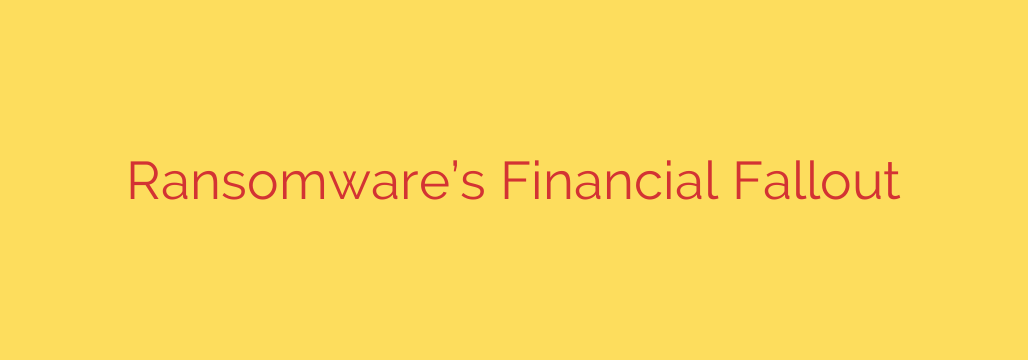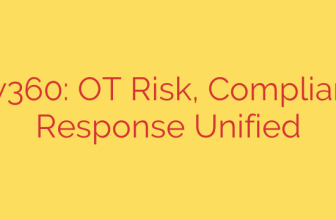
The True Cost of a Ransomware Attack: Uncovering the Hidden Financial Fallout
When a ransomware attack hits, the first number that comes to mind is the ransom demand itself. Displayed in stark, intimidating numbers on a locked screen, this figure can seem like the entire problem. However, focusing solely on the ransom is a critical mistake. The reality is far more complex and financially devastating.
The ransom payment, whether it’s thousands or millions of dollars, is merely the tip of the iceberg. The true financial fallout of a ransomware attack extends far beyond the initial demand, creating a cascade of expenses that can cripple even the most resilient organizations. Understanding these hidden costs is the first step toward appreciating the vital importance of proactive cybersecurity.
Beyond the Ransom: The Hidden Financial Drain
The initial demand is a direct and painful cost, but the subsequent expenses are what truly define the financial disaster of a ransomware incident. These costs accumulate rapidly and can linger for months, or even years, after the attack is resolved.
Here are the key areas where businesses suffer the most significant financial damage:
Crippling Business Downtime: This is often the single most expensive component of a ransomware attack. Every hour your systems are offline translates to lost revenue, halted production, and decreased employee productivity. For manufacturing plants, healthcare providers, and logistics companies, downtime isn’t just an inconvenience—it’s a catastrophic failure that brings all operations to a standstill. The cost of this interruption frequently dwarfs the ransom demand itself.
Intensive Recovery and Remediation: Eradicating malware and restoring systems from scratch is a monumental task. It requires hiring expensive cybersecurity consultants, forensic investigators, and IT specialists. Your internal IT teams will work exhaustive overtime, pulling them away from strategic projects. The cost of labor, specialized software, and sometimes even new hardware required for a full system rebuild can be astronomical.
Irreparable Reputation Damage: Trust is a fragile asset. A successful ransomware attack is often a public event, signaling to customers, partners, and investors that your organization failed to protect its data. This loss of confidence can lead to customer churn, canceled contracts, and a devalued brand. Rebuilding that trust is a long, expensive process involving public relations campaigns and marketing efforts.
Regulatory Fines and Legal Fees: If sensitive data, such as personal customer information or patient health records, is compromised, the legal consequences can be severe. Regulations like GDPR, HIPAA, and CCPA impose hefty fines for data breaches. Beyond regulatory penalties, organizations often face class-action lawsuits from affected individuals, leading to years of costly legal battles and settlements.
Skyrocketing Insurance Premiums: A successful cyberattack instantly re-categorizes your business as “high-risk” in the eyes of cyber insurance providers. Following an incident, expect your insurance premiums to increase dramatically at your next renewal, assuming you can even secure coverage at all.
Forced Technology Upgrades: An attack exposes every weakness in your security posture. To prevent a recurrence, organizations are often forced into unplanned and unbudgeted investments in new security technologies, including advanced endpoint protection, network monitoring tools, and enhanced identity access management systems.
An Ounce of Prevention is Worth a Ton of Cure
The financial narrative of a ransomware attack is clear: the cost of recovery far outweighs the cost of prevention. Waiting until after an attack to invest in robust security is a failing strategy. To safeguard your organization from this devastating financial fallout, proactive measures are non-negotiable.
Here are essential security steps every organization should implement:
Develop a Robust Backup Strategy: Regularly back up your critical data using the 3-2-1 rule (three copies, on two different media types, with one off-site). Most importantly, test your backups frequently to ensure they are viable and can be restored quickly.
Implement Multi-Factor Authentication (MFA): MFA adds a critical layer of security that makes it significantly harder for attackers to compromise accounts, even if they have stolen credentials.
Conduct Continuous Employee Training: Your employees are your first line of defense. Train them to recognize and report phishing emails, suspicious links, and other social engineering tactics used to deliver ransomware.
Prioritize Patch Management: Attackers often exploit known vulnerabilities in software. Maintain a strict and timely patch management program to ensure all your systems, applications, and devices are up to date.
Create and Rehearse an Incident Response Plan: Know exactly what to do the moment an attack is detected. An incident response plan minimizes chaos, streamlines decision-making, and can significantly reduce the duration and impact of an attack.
Ultimately, viewing ransomware as just a ransom demand is a dangerously narrow perspective. It is a full-blown business crisis with deep and lasting financial consequences. By shifting focus from reaction to prevention, you can protect your operations, your reputation, and your bottom line.
Source: https://www.paloaltonetworks.com/blog/2025/10/from-ransom-to-revenue-loss/








